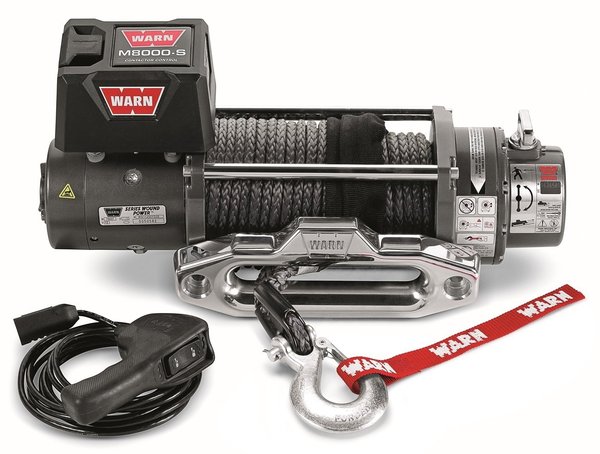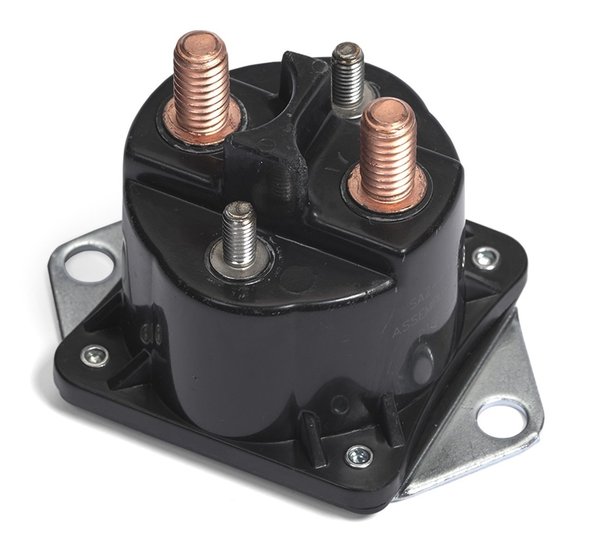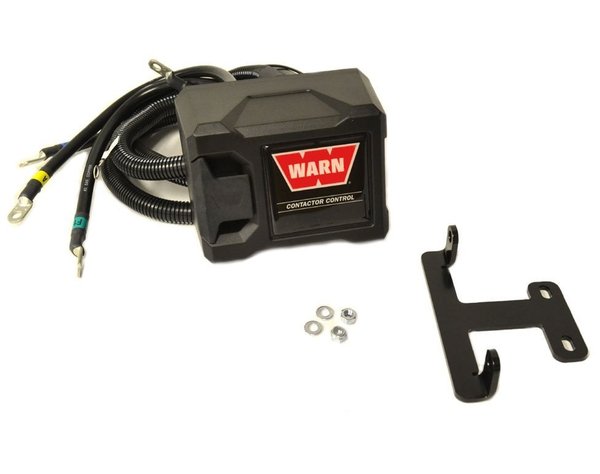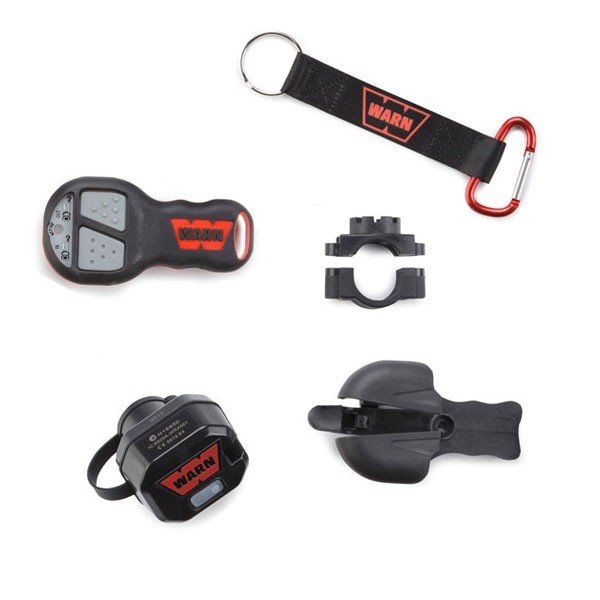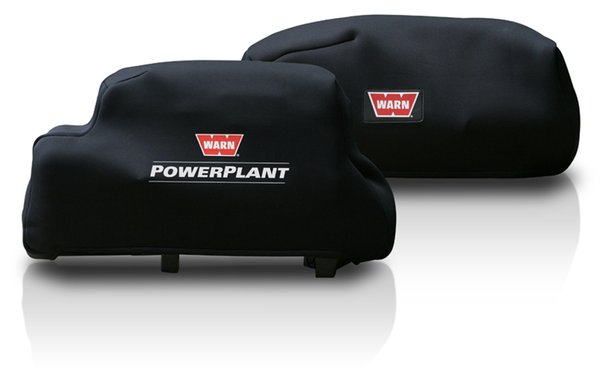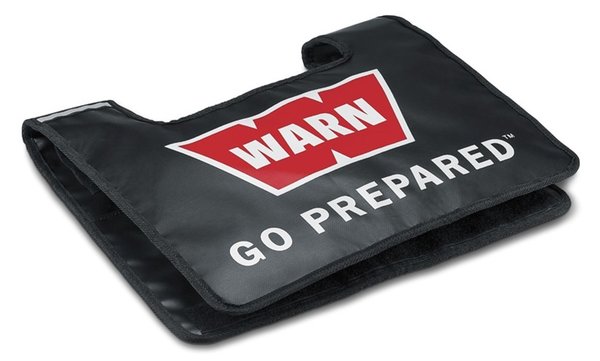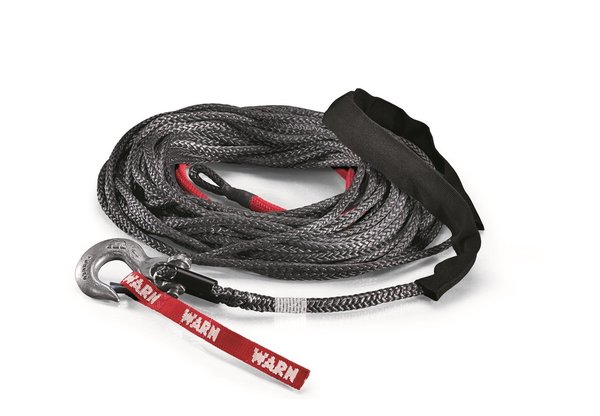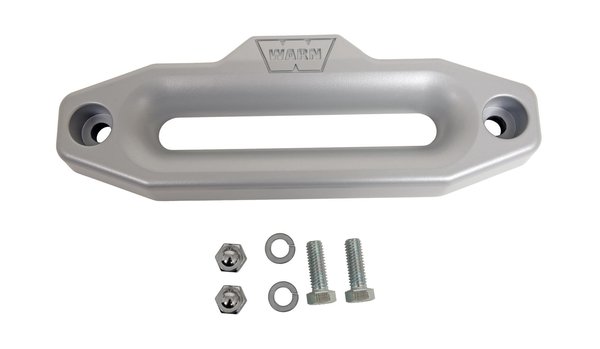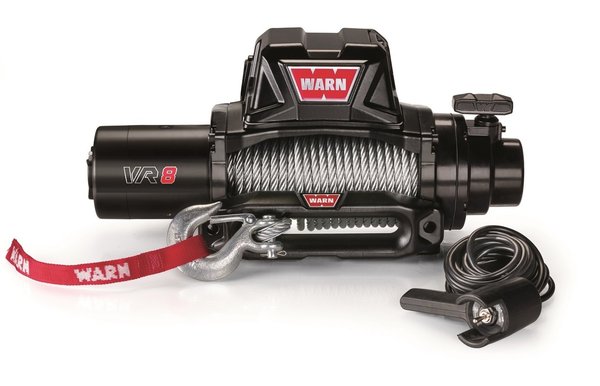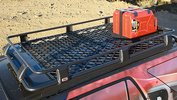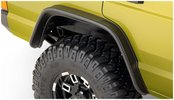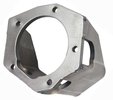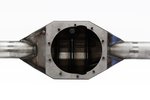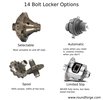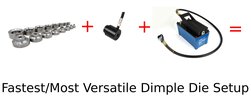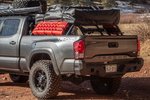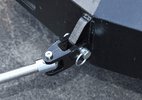The Warn M8000 and M8 Winch Buyer's Guide
We all can agree that a winch can add a whole new dimension to your fourwheeling. Suddenly, you can can go places you've never gone and self recover.
The Warn M8000 winch (and it's synthetic rope counterpart, the M8000-S) is one winch that can do the job and keep you on budget!
But what do you need to know about it?
By the end of this article, we'll have answered all your questions about the M8000 - not just specs like weight and dimensions, but the parts you need to fix it when it breaks (like solenoids), parts that can improve your winching (like contactors, winch remotes, and synthetic winch rope), and whether it's strong enough for your 4x4.
- Is it strong enough for your 4x4?
- M8000 with Synthetic Rope
- Performance Specs
- Warn M8000 Motor and Electrical Draw
- M8000 Solenoids and Contactors
- Is the Warn M8000 Waterproof?
- Warn M8000 Upgrades
- M8000 Installation and Manual
- Models and Part Numbers
- M8/M8000 Winch Parts
- Warn M8000 vs. Warn VR8000
- Warn M8000 vs. Warn Zeon 8000
- Warn M8000 Winch 26502: Full Specs and Data
- Warn M8000-S Winch 87800: Full Specs and Data
- Winch Database
- Use a good moly grease on the internals that is water resistant and suited for your local temperatures.
- Run the winch on freespool after dunking it. The heat from the motor will help dry it out.
- Consider switching to a contactor pack instead of solenoids. Contactors will be more water resistant than solenoids.
- Strip your winch down and clean it if you've been in particularly muddy or silty water. Sand, silt, and grit will destroy your motor and gears.
- Warn Winch Solenoids - Make sure you check ALL your winch's electrical connections and grounds before replacing your solenoids. Needs the solenoid-specific winch controller.
- Winch Controller - Has a 12 foot lead and is necessary when you run over your old one or (permanently) loan it out to a friend. Works only with the solenoid pack.
- Solenoid Mounting Bracket - Some winches need this if you don't like the way the solenoid mounts.
- Winch Cable - Steel cables wear and get weaker as they age. The M8000 uses 100' of 5/16" wire rope.
- Synthetic Winch Rope - These wear out like steel cable, but are lighter, stronger, and safer. The M8/M8000 uses 100' of 3/8".
- Contactor Pack - Requires the contactor specific winch controller.
- Winch Controller - Has a 12 foot lead. Works only with contactor control pack.
- Warn Short Winch Motor
- Got a burned-up motor? Motors have clear varnish on the commutator
parts. Cooked motors will have dark brown spots from overheating and
need to be replaced.
- Roller Fairlead - You'll need it if you want to replace a steel hawse fairlead or you smash yours into a rock.
- Aluminum Hawse Fairlead - 10 lbs lighter than the steel roller fairlead, and also lower profile. Use only with synthetic rope.
This is a reliable, inexpensive winch that comes with 100' of steel winch cable, a roller fairlead, a wired winch controller, and a contactor pack.
The Warn M8000/M8 winch is popular because it's powerful enough for smaller vehicles like Jeep JKs and Toyota Tacomas, but it's also relatively inexpensive. It's easy to work on and repair, and there are tons of replacement parts and ways to upgrade it. This particular model has been in Warn's product line for years and years and is trusted by many fourwheelers to get them unstuck . It has a proven track record and can be made quite lightweight by switching to synthetic rope and an aluminum hawse fairlead.
You need to know one very important thing:
The Warn M8 and the Warn M8000 are different winches.
We, and lots of other people, refer to the M8 as an M8000. Unless it matters, we'll refer to the M8 as the M8000 in this article. The M8000 has been around for years and the M8 is just the updated version. It is still made in America. If you need winch parts and parts lists, we have both down below. The Warn M8 winch part number is 26502. The old-style Warn M8000 winch part number is 20910 and is not available anymore.
Down below, we'll cover aspects of both the old M8000 and the new M8.
Is it strong enough for your 4x4?
Here's the deal:
The simplest way to answer this question is to find the GVWR of your make and model of vehicle and multiply it by 1.5. The GVWR is often on a door tag on your rig, or you can google it. Basically, if your answer is 5300 lbs or less, the M8000 winch is strong enough for you. There are lots of Jeeps and Tacomas in this range, but it's too small for F250 crew cabs.
Now:
The "1.5" factor is the recommendation by most winch manufacturers. In truth, if you're carrying a lot of gear or have a lot of heavy mods on your rig, you might want a larger winch. You can overcome a lot of problems by using a snatch block and taking care with your winch cable. All winch cables are pretty weak and have very little safety factor built into their use.
You might be wondering, will it bolt directly on to your rig?
No. Pretty much every 4x4 needs either a winch mounting plate or a winch bumper.
But guess what?
There are vehicle-specific winch mounting plates and also universal winch mounting plates that will allow you to easily bolt on an M8000. Most winches, including the M8000, have a universal winch mounting bolt pattern. This means that you can use just about any winch mounting plate or winch bumper that fits your vehicle to install your winch.
M8000 with Synthetic Rope
Winches are heavy and steel winch cable is the cause. The M8000 also
suffers from the steel weight penalty and the
I-cut-my-delicate-fingers-on-a-cable-burr penalty.
But:
You can fix this easily with synthetic winch rope and an aluminum hawse fairlead. In steel cable form, the M8000 weighs 74 lbs. Using our winch line weight calculator, we know that the 100' 5/16" steel winch line weighs about 17.3 lbs and 100' of 3/8" synthetic winch rope weighs about 3.4 lbs. Pretty big difference.
The synthetic winch rope version is lighter, safer, and has a much stronger winch line than the steel winch cable version.
It gets better:
You can also save another 10 lbs by switching to an aluminum hawse fairlead. Together, you can reduce your winch weight by about 24 lbs, to 50 lbs total!
Curiously, Warn lists the actual weight of the synthetic version of the M8000 at 55 lbs, but we're not sure where the discrepancy comes from. Steel cable, roller fairleads, synthetic winch rope and hawse fairleads all have fairly similar weights.
You might be wondering if weight is the only good thing:
Actually, synthetic is stronger than steel line, tends to whip less when it breaks, and can be easily spliced on the trail when it breaks. Besides all that, it's quite a bit easier to handle because it never develops steel splinters and burrs and due to its light weight.
Want to upgrade your old M8000 to synthetic winch rope:
You'll need an aluminum hawse fairlead and 100' of synthetic winch line. We recommend that you go up a 1/16" in winch rope diameter when switching to synthetic because it will be significantly stronger. Where the breaking strength of 5/16" steel cable is 9800 lbs, the breaking strength of 3/8" synthetic is 14,400 lbs. This will give you a much-needed safety factor when doing recovery.
If you know you want an M8000 with synthetic line, then buy the M8000-s. It comes with Warn's Spydura winch rope. Spydura has UV coating to protect it from the sun and a coating to protect it from heat that emanates from the winch drum. This eliminates two synthetic rope problems.
Performance Specs
With one wrap on the drum and no load, the M8 is rated to have a line speed of 30.2 feet/minute. With a full load (8000 lbs) and one wrap on the drum it has a line speed of 4.8 feet/minute. This is slightly slower than a Warn 9.5 XP and about half the speed of a 12 volt Warn 8274-50.
Warn M8000 Motor and Electrical Draw
This 12 volt 4.8 motor can be used to replace your M8 winch motor or can be swapped in to the old-style M8000 winches. The previous part number (25982) is obsolete.
The M8000 comes with a series wound, 12V 4.8 HP winch motor. If you need to replace it, we recommend going with the real Warn product
or taking it to a local electric motor shop to see if they can repair
it. The old M8000 motor part number (25982) has been superseded by 77893, which is the correct short winch motor for the M8, the M8-s, and the M8000.
Warn recommends a minimum of a 650 CCA battery to power the winch, and it'll come with 2 gauge 72" cables. In a winch test by Overland Journal, even high-weight-rated winches drew a max of 165 amps. With this motor and a lighter vehicle, you're probably looking at 100-110A draw.
If you're worried about your alternator output being able to power the motor, don't be: the battery is more important.
Here's why:
The
alternator only charges your battery. When your winch solenoids click
into place, the winch motor takes power from the battery, not the
alternator. If your rig didn't start, you could still winch using your
battery's capacity. If you have a choice, upgrade to a larger capacity
battery.
That said, you still need to charge your battery.
This might mean running your winch, then letting your battery charge for
a few minutes. This has the important side benefit of also letting your
winch cool down.
Always a good idea:
Get a voltmeter. A running vehicle with a normal charging system should read 13.4 volts at the battery. If you find your voltage dropping by a volt or so, do a cycle of charging.
M8000 Solenoids and Contactors
First, if you're reading this because you have low power and think you have a winch solenoid problem, go check all your contacts and cables. Bad cables, connections, and grounds will sap the power from your winch. Now on to the solenoids:
Warn winch solenoids come in 2 flavors.
Well, that's not really true:
This is a typical winch solenoid. It has 2 large post to carry large currents that run the winch and 2 small posts to carry signals from your winch controller.
There are solenoids, then there are contactors.
Solenoids and contactors serve a similar function. When you flip the
switch on your winch to spool in or out, they take the signal that they
receive on a small gauge wire and "throw a switch" internally to make
power flow through big wires.
The old M8000 uses 4 solenoids
to control the current flow in the winch motor. Solenoid tech has been
used in winches forever - they are simple technology. If you need to
replace a Warn winch solenoid, they are easily available, and not too expensive. You can also buy a whole new solenoid pack.
But consider contactors if you're going to replace your control pack:
Contactors
are newer tech and are used on the Warn M8 and M8-s. They're
waterproof, stay cooler, and are more reliable than solenoids. They're
becoming a popular swap, especially for winches with worn out, old
solenoids . You can DIY retrofit one pretty easily or just buy a contactor kit from Warn if you want to put a contactor pack on a solenoid-equipped M8000.
Note:
You'll also need a winch controller that has the same pin configuration as the contactor pack - the old controller won't work.
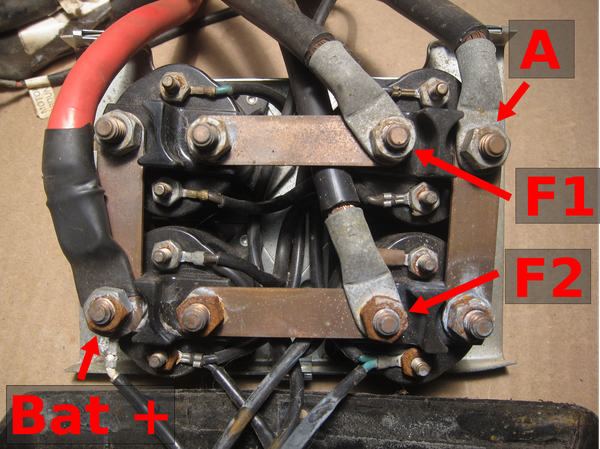
A typical 4 solenoid winch wiring setup. These connections are a little corroded and need to be cleaned up. If you are suffering low power or solenoid clicks with no movement, clean up all your grounds and other connections. This winch has a 5-wire controller (the small wires).
To troubleshoot your winch solenoid pack, you need a basic understanding
of how they work - it's very simple. Solenoids will have either 2
big wires and 2 small wires or 2 big wire and 1 small wire. When
electricity is applied or cut off at the small terminal, a bar of metal
moves inside the solenoid to either connect the 2 big wires or
disconnect the 2 big wires.
You can bench test a winch solenoid:
Disconnect it from the winch and hook up a continuity tester to the 2 big terminals - you want to see if they connect or not. Connect positive and negative battery leads to the small terminals on the winch solenoid, or to the small terminal and the solenoid mount. You should see a change in continuity - if you don't, the solenoid is bad and needs to be replaced.
Is the Warn M8000 Waterproof?
No.
There are various reasons that it's not waterproof, but it boils down to the fact that it's planetary gear winch with no seals at the sides of the drum. There are waterproof planetary winches, but they are "extreme duty" winches or ATV winches.
And let's face it:
This is a pretty cheap winch, so we can't get everything.
But does it matter that the M8000 isn't waterproof?
For most normal people, no, it doesn't. It just means that, as with any winch, you need to do a little maintenance. You can do a few things to increase its longevity if it sees water:
Warn M8000 Upgrades
The M8000 is a cheap winch, but you can make it even better with some upgrades. You'll have to decide whether its better to buy all this stuff or just buy a winch with everything included.
Here's the good stuff:
Contactor Pack and Winch Remote
Contactors work more reliably than solenoids. The winch controller plugs into the side of the contactor pack and is sleeker than the solenoid pack.
You can massively improve the performance and reliability of your winch with a simple swap:
A contactor pack.
If you have an older M8000 with solenoids, you can completely replace your solenoid pack with a new-style contactor pack.
Why should you do this?
Contactor packs are less affected by water, run cooler, and are generally more reliable than solenoids. Lots of wheelers have found that winches that needed semi-regular solenoid replacement operate trouble-free for years with a contactor pack upgrade. We've linked to a control pack for a 9.5 XP, but this is the same pack that's used on the M8 and M8-s as well as other winches.
It's great because it's a bolt on swap for your older M8000 winch. It does require a new winch controller that matches the contactor pinout, but the contactor pack plus controller are quite close in price to the Warn solenoid pack.
Warn Contactor Pack
Warn Winch Controller for Contactor Pack
Warn Wireless Winch Remote
Instead of dealing with cables that get snagged on brush or run over, install a wireless winch control and spool your winch from up to 90' away.
Wired winch remotes are un-fun. If you keep it plugged in while wheeling, the wire snags on branches and brush as you drive by. If it's raining, boiling hot, or freezing cold, you still need to have your window rolled down to run the wire through, which means that you get hot, get cold, or get wet.
But how do we solve this problem?
With a winch remote! This plugs into any 5 wire winch (like the Warn M8000) and can be used from up to 90 feet away. The remote sits in a holster that you can set on your dash. No more open windows or snagged wire. Life is good.
Warn Winch Cover
Keep your winch clean and corrosion-free. Protect your steel cover from water and your synthetic winch line from the sun!
Here's the deal:
The M8000 isn't waterproof. You can keep the rain and mud off your M8000 with this neoprene cover. It won't protect your winch in a submersion, but it your winch is outside all day, every day, this will help to keep water out of the gear box and solenoids.
Another reason to get an M8000 cover:
If you have synthetic winch rope, keeping the sun off it makes it last longer. synthetic rope is expensive, so...we'll take the cover.
Warn Winch Damper
Meets competition weights and has a rubberized coating at the fold to prevent sliding.
Do you know how pitifully underrated your steel winch cable is? Your 3/4" D-ring shackles have a breaking strength of 57,000 lbs with a safety factor of 6, meaning they are safe for loads up to 9,500 lbs. Your 5/16" steel winch cable, on the other hand, breaks (yes, breaks) at 9,800 lbs.
This is not a typo:
Technically, they are rated as safe for loads up to 1,960 lbs.
This is why winch cables break. Add a little mud, some rocks, an uphill climb, and you can easily exceed the breaking strength with a normal winch pull. Not to mention that you've already soared past the working load limit.
We combat this with a recovery damper. Throw it over a steel winch line, synthetic rope, or recovery strap. The damper won't always stop the whipping winch line, but it'll slow it down. Dampers are now mandated in several off road competitions and used by pretty much everybody.
Warn Spydura Synthetic Winch Rope
At 1/7 the weight of steel winch line, synthetic winch line is way easier to handle than steel. It'll lighten your rig and it even floats in water.
Drop some weight off your rig and make winching safer:
You can lose about 14 lbs by switching to synthetic.
That doesn't sound like a lot, but you know where it counts most? Actually winching. Like when your wife or girlfriend or son with skinny arms needs to negotiate a rocky hill with your stiff, steel winch cable. It's a lot easier when it weighs as much as a laptop.
Synthetic winch rope is also safer. Steel wire rope develops burrs and splinters that will cut your hands and catch your clothing. This never happens with synthetic. It'll whip less when it breaks and it's easy to splice on the trail. Spydura, in particular, also has coatings to prevent deterioration from UV light and heat from the winch drum. 3/8" Spydura breaks at 14,400 lbs, a much larger safety factor than the 9800 lb breaking strength of a standard steel cable.
What's the bottom line?
Synthetic winch rope is the way to go for safer, easier to operate, easier to fix recovery operations. And much better for people with tiny arms.
Warn Aluminum Hawse Fairlead
There should be less opportunity for pinching with this fairlead when compared with rollers. The shorter profile also means that you'll get a better approach angle.
This hawse fairlead sticks out just a little but less than the standard roller fairlead. It has the correct bolt pattern to mount directly on to an M8000. You should only use this fairlead with synthetic rope.
Why would you need this type of fairlead?
First, it looks great. Aaaah. Now we got that out of our system. Next, this type of fairlead is used to reduce wear on your synthetic rope. With a new roller fairlead this isn't a problem. In fact, some manufacturers say that you need to use an aluminum hawse with synthetic, but it'll work fine with a roller.
But:
If you're using a roller fairlead that's all nicked, gouged, and burred from steel wire rope contact, you need a new fairlead. You can go with a clunky-looking roller fairlead, or one of these sleek aluminum jobs.
M8000 Installation and Manual
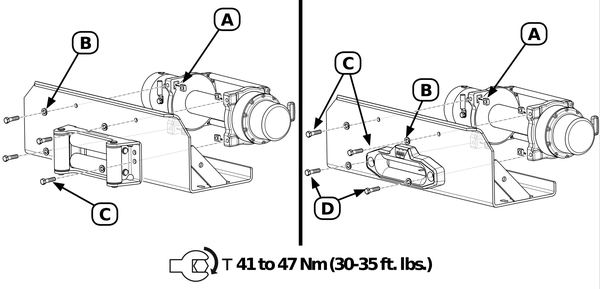
Note that the length of the mounting bolts will change depending on the thickness of the mounting plate and the type of fairlead. The mounting bolts are 3/8"-16.
You should definitely read the installation manual that comes with your winch. It's short, but tells you everything you need to know. Get it here:
Warn M8000 Winch Manual
The Warn M8000 is a foot-down or foot-forward winch. This means that the bolt holes to mount it can either point at the ground or in front of your rig. If you plan to fab your own winch mount for installation, the bolt pattern for the feet is 10" x 4.5".
Want to make your install go a little easier?
You can also get a winch mounting plate that your M8000 will bolt to. You can weld or bolt the plate to anywhere. Warn makes a foot-down winch plate that's powdercoated, but you can also use other winch mounting plates as well.
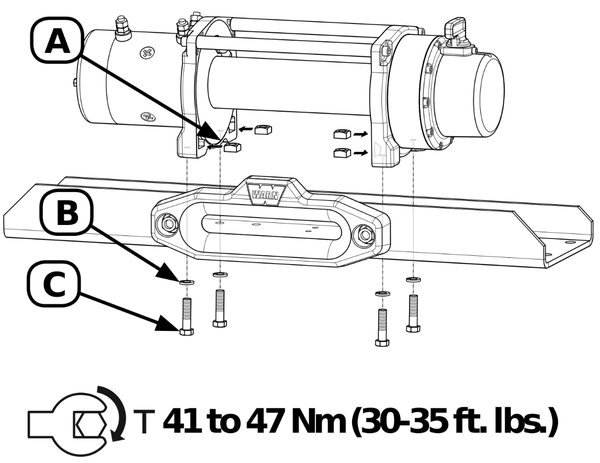
The pictured installation here uses a Warn winch mounting plate.
Bolting the winch down is easy:
The M8000 is setup to install with 4 3/8"-16 bolts on a 1/4" minimum thickness mounting surface. Torque the bolts to 30-35 ft-lbs. You'll want to use different length bolts depending on how thick your plate is and whether you have a roller or hawse fairlead in a foot-forward configuration.
Wiring it up is also easy:
It's just connecting wires to winch terminals, and then the winch leads to your battery. Check out the diagram.
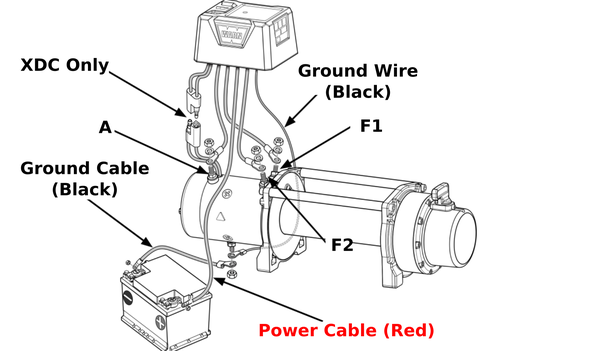
Some
people like to remote-mount the solenoid pack in the engine compartment
to keep it protected. You can do this, but you'll need longer A, F1, F2, and ground cables to
reach from the solenoid pack to the winch.
Can you skip the ground cable extension?
Maybe. You might get by using the winch's stock ground cables by running the control pack ground to the frame and the winch ground (stud on the winch's bottom) also to the frame. However, if these aren't "good" grounds, you'll just end up with a weak-running winch.
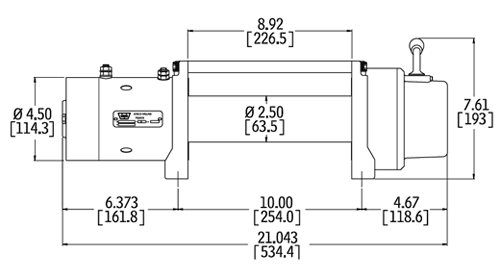
The overall size of the M8000 is 21.04" long x 6.3" deep x 7.6" high. The drum is 2.5" in diameter by 9" long.
Models and Part Numbers
This can be confusing:
As we said in the intro, the M8 and the M8000 are technically two different winches. The M8 is the updated version of the M8000, but everyone still refers to the M8 as the M8000 because it's so well known. To make things more confusing, Warn refers to the synthetic M8-s and M8000-s as the same winch.
Here's the deal:
The old style Warn M8000 winch's part number is 20910. It is a steel cable winch with a solenoid pack. You can ID it because the winch controller plugs into the middle of the top of the solenoid pack. Here is the parts list for that winch:
Warn M8000 Winch Parts List and Diagram (Old style)
The new style Warn M8 winch part number is 26502 for the US steel winch line version and 88502 for the international steel winch line version, which is CE rated. This updated winch has a contactor pack instead of a solenoid pack. The contactor pack is much sleeker-looking than the M8000 solenoid pack and the winch controller plugs into the side of the pack instead of the middle. Here is the parts list:
Warn M8/M8000 Parts List and Diagram (New Style)
The synthetic version of the M8 Warn uses the model names M8-s and M8000-s. The Warn part number is 87800. Here is the parts list:
Warn M8-s/M8000-s Parts List and Diagram
Unlike the steel cable M8, there is no CE-compliant M8000-s, so there is no international version. If you need a CE-compliant winch but with synthetic rope, you can buy the M8 steel winch cable version and add a synthetic rope and aluminum fairlead.
What's the bottom line?
The M8, M8000, and M8-s winches are all very similar. Many of their parts will be interchangeable, like the winch cable, fairleads, and synthetic rope, but we'll indicate significant differences like the contactor/solenoid packs and winch remote.
M8/M8000 Winch Parts
Some of the M8 and M8000 parts cross over directly. Several of the old M8000 parts have been superseded by new parts. We split up the parts here into parts that are only for the M8000 or are for both:
Since the M8 is just an upgrade to the M8000, you can retrofit the many newer M8 parts onto your old M8000 easily.
Parts that fit M8000 only (Old style)
Parts that fit M8 or old style M8000
Warn M8000 vs. Warn VR8000
Two cheap winches from Warn: Which should you get?
The Warn VR8000 is usually cheaper than the M8/M8000. Why?
It's made in China, while the M8/M8000 is made in the United States. The VR line is definitely Warn's attempt to get more people to buy winches that maybe aren't hardcore offroaders.
In fact:
Warn has even said they're trying to compete with the cheap winches coming out of China with the VR line. Keep that in mind.
The VR8 is for lighter duty than the M8000 winch. It weighs less and has a steel hawse fairlead.
Let's start with appearances:
It looks like something out of a futuristic war movie where the police have black winches. It's a sleek tactical black.
It has lighter construction than the M8000 and a slightly shorter winch rope, at 94 feet. It is noticeably lighter than the M8000 and probably achieves this with thinner castings and less robust parts. The performance specs are similar to the M8000. Instead of a roller fairlead, it uses a steel hawse fairlead. With any use the paint will get chewed up, and the roller fairlead on the M8000 is definitely smoother.
Just like the M8000, it's available with a synthetic winch rope and an aluminum hawse fairlead.
The old version of the VR8000 (86245) is
discontinued. This version used a solenoid pack, just like the old-style
M8000s, to keep costs down. However, the newest VR8000 (96800) uses an
Albright contactor pack, just like the M8 winch. This is a welcome
upgrade.
What's the bottom line?
The VR8000 is a budget-oriented, light-duty winch with a steel hawse fairlead that's okay for light-duty wheeling. If you need something more robust, the M8000 is stronger, comes with a roller fairlead, and has a proven track record.
Warn M8000 vs. Warn Zeon 8000
Unlike the VR8000, the Zeon 8000 goes in the other direction:
It's a little more expensive and has more features than the M8000. First, like the M8000, it's made in the USA and has construction that is at least as robust as the M8000.
Just like the M8000, it's available with a synthetic winch rope and an aluminum hawse fairlead.
This winch is a little more robust and waterproof than the M8000. It has a larger aluminum drum that's light and should reduce winch cable wear.
Where the M8000 is not waterproof, the Zeon 8000 has an IP68 rating.
This doesn't make it "waterproof", but it does mean that it'll resist
water better than the M8000. The winch drum is bigger and made of
aluminum to dissipate heat. The larger diameter and heat dissipation
should keep synthetic winch rope lasting longer and will likely even
help steel cable since it'll be wrapped around a slightly larger radius.
Like the M8000, it has a contactor pack. The contactor pack
is relocatable and can be mounted to a brace on top of the winch. And
obviously, it has that futuristic, tactical look to it.
Performance:
It's a little faster than the M8000 with a single-wrap, no-load line speed of 35 feet per minute and a full-load line speed of 6.2 feet per minute.
What's the bottom line?
This is a relatively new winch but we think it's a good choice if you need the extra features over the M8000. The IP86 rating should translate into less maintenance and the large aluminum drum should be great for synthetic rope.
Last updated: September 5, 2019

